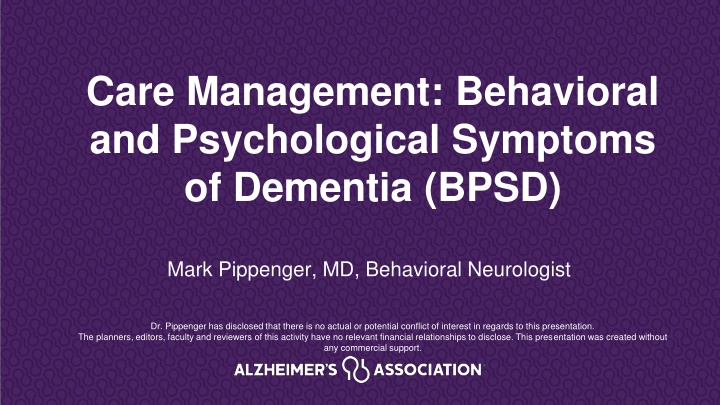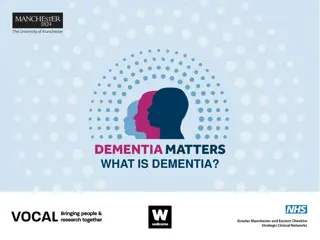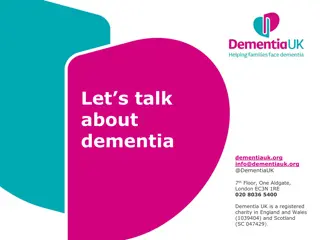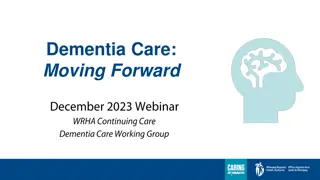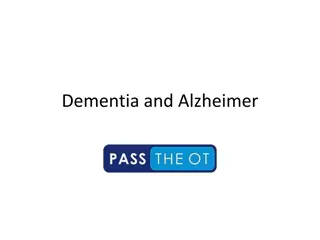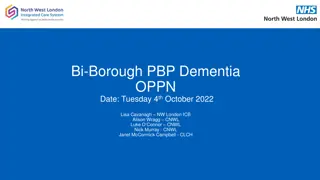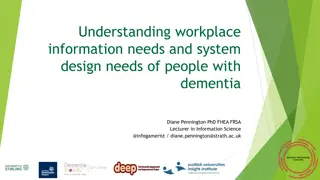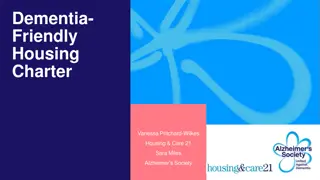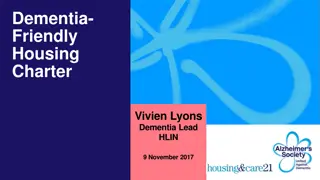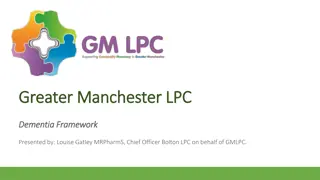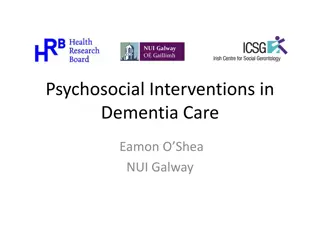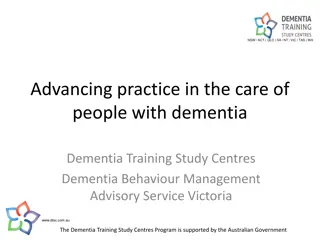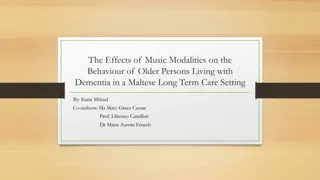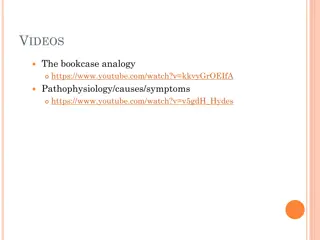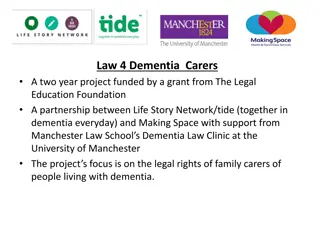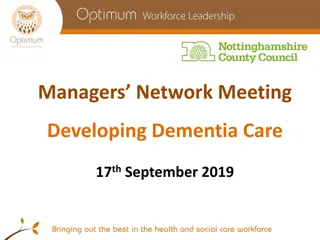Managing Behavioral Symptoms in Dementia
Identifying and addressing behavioral and psychological symptoms in patients with Alzheimer's disease and related dementias can significantly impact their quality of life and caregiver burden. This presentation explores common symptoms, causes, and strategies for managing challenging behaviors.
Download Presentation

Please find below an Image/Link to download the presentation.
The content on the website is provided AS IS for your information and personal use only. It may not be sold, licensed, or shared on other websites without obtaining consent from the author.If you encounter any issues during the download, it is possible that the publisher has removed the file from their server.
You are allowed to download the files provided on this website for personal or commercial use, subject to the condition that they are used lawfully. All files are the property of their respective owners.
The content on the website is provided AS IS for your information and personal use only. It may not be sold, licensed, or shared on other websites without obtaining consent from the author.
E N D
Presentation Transcript
Care Management: Behavioral and Psychological Symptoms of Dementia (BPSD) Mark Pippenger, MD, Behavioral Neurologist Dr. Pippenger has disclosed that there is no actual or potential conflict of interest in regards to this presentation. The planners, editors, faculty and reviewers of this activity have no relevant financial relationships to disclose. This presentation was created without any commercial support.
Learning Objectives At the conclusion of this course, participants will be able to: Recognize common behavioral and psychological symptoms in patients with ADRD. Recognize the importance of determining what the behavior is communicating. Evaluate strategies for managing behavioral issues in patients with ADRD.
What are BPSD? Non-cognitive symptoms of dementia 95% of persons with dementia will have BPSD at some point during their life More common as dementia progresses Often the cause of significant distress, increased caregiver burden, and may lead directly to institutionalization, greatly increasing cost of care
What are BPSD? Apathy Depression/anxiety Disinhibition Elation/euphoria, moria Sleep disturbances (insomnia, hyper somnolence) Psychosis (delusions, hallucinations) Aberrant motor activity (Wandering, pacing, fidgeting) Agitation
Causes of BPSD Factors related to the person with dementia Factors related to care givers Environmental triggers
Factors related to the person with dementia Biological factors Acute medical conditions (including pain) Pre-existing personality Cultural beliefs, prejudices Pre-existing psychiatric illnesses Unmet needs (physical, psychological, emotional, or social)
Factors related to caregivers Stress or depression (in the care giver) Negative communication styles Poor coping abilities Mismatch between caregiver expectations and patient abilities
Factors related to the environment Objects/tools in the home Drugs Safety issues (driving) Overstimulation Understimulation (boredom)
Drugs that can cause BPSD Opioid analgesics (incl tramadol) Benzodiazepines Anticholinergic drugs Dopamine agonists (ropinirole, pramipexole) Anticonvulsants Antipsychotic drugs
Management of BPSD Nonpharmacological management the person centered care approach should be the first-line treatment for any BPSD Drugs can provide chemical restraint but should be used only as a LAST RESORT
A Person-Centered Behavior Management Approach When trying to understand the root of a concerning behavior: Specify measurable behavior Understand dementia etiology Estimate dementia severity Explore mediators (what is behavior communicating) What are desired behaviors, and how do we increase them: Consider contentment (when is person at her/his best) Identify target behaviors to increase Understand person s history
Behavior is Communication As language and cognitive skills decline, overt behavior will fill the void. This implies: Behavior is not random Behavior is adaptive for that person Behavior is goal directed
Mediators of Challenging Behaviors in Dementia Physical Health Factors Pain/illness Psychological Health Factors Depression/worry Environment, Task, Approach Over/understimulated Social History/Habit
Cannot Create a Behavior Vacuum Behaviors compete in real time Ask when is the person at their best? Increasing frequency of desired behaviors may reduce the frequency of undesired behaviors
Caregiver Education & Support is Vital! Validate, Join & Distract Avoiding correcting the patient Communicate, but don t argue with/scold the patient Reasoning not generally effective strategy Don t raise your voice with the patient, even if they raise theirs Change the subject or activity to something more interesting or pleasant
Drugs for Treating BPSD No drug has proven efficacy above placebo, for treatment of Behavioral and Psychological Symptoms of Dementia No drug is approved by the FDA to treat agitation, hallucinations, or other behavioral symptoms in people with dementia Many drugs commonly used off-label to treat BPSD have serious, potentially fatal side effects
Drugs commonly used to treat BPSD Antipsychotics Benzodiazepines or other sedatives Anticonvulsants (esp divalproex) Antidepressants Cholinesterase inhibitors and memantine
Take Homes: Approach to Managing BPSD Identify clearly what the problem behavior is Try to identify triggers for problem behaviors Consider the patient s background and premorbid personality in identifying causes for problems, and way to identify positive competing behaviors Consider physical symptoms or medication effects as a possible cause Provide caregiver education and support Turn to medications only as a last resort, if non pharmacological management fails
Alzheimers Association Resources Toll-free helpline: 1-800-272-3900 Managing Behavioral and Psychological Symptoms of Dementia A guide to treat behavioral and psychological symptoms of dementia through pharmacological and nonpharmacological methods. Activities at Home for Patients with Middle or Late Stage A guide to activities for patients at home that may relieve some behavioral and psychological symptoms of dementia.
